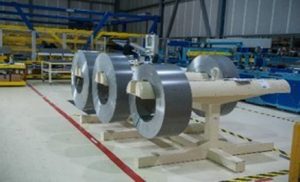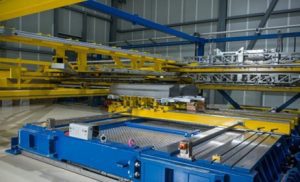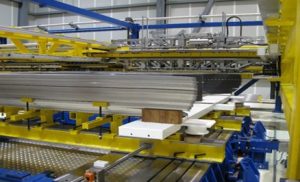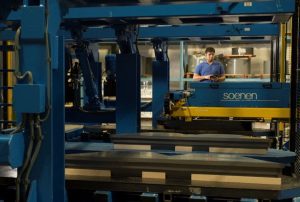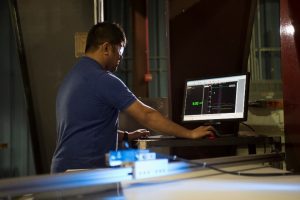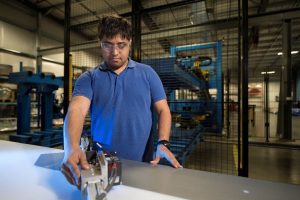Transforming Energy for America
Core
The core is the part of the transformer where the magnetic field oscillates. It is made of a high-grade tailored steel with a small percentage of silicone to minimize energy lost in heating. The core steel is rolled into thin sheets, as small as 20 gauge and coated on each side with insulating material to further minimize losses.
For power transformers, the sheets are stacked together with mitered joints, by varying the width of steel laminations in the leg of mitered core and approximating a circular cross section.
The process involves core cutting and stacking equipment to construct the core frame. Automatic core cutting machines have become the standard for power transformer cores. Core stacking requires acute precision with careful attention to the following:
- Gap at the step lap needs to be small — under 2mm
- Control of burrs — thin, steel threads that break loose in oil and create partial discharge later
- Square control and perpendicularity of magnetic circuits
- Tightness of core to reduce noise levels
Manual stacking is a common practice in the industry, but it can be cumbersome, time-consuming, and prone to errors. At VTC, we recognize the potential for mistakes and plan ahead to prevent them. Our technicians are highly trained to minimize risk during the assembly process.
Our plant in Georgia utilizes a state-of-the-art Astronics core cutting assembly unit. The Astronics automated core cutting equipment allows precise cutting of single- and multi-leg transformer cores.
Integrated with the core cutter is an automated E-stacker. The E-stacker stacks the core steel into its final position as it is cut, effectively eliminating human errors while lowering losses and increasing reliability. At other VTC plants a different version of core stacking is used for medium power transformers.
A laser measurement system is used at VTC to scan for burr and measure it at a predetermined rate.
Advantages
- Eliminates the need to recalibrate for each measurement r.
- Increased measurement accuracy– less human interference involved in measuring.
- The instrument can provide least count, up to 0.1 mil – increased the gradient of detecting the burr.
- Generates reports in excel format; reports can be saved per job for records. Reports can also be used to track burr and to prompt preventive maintenance on the machine.

